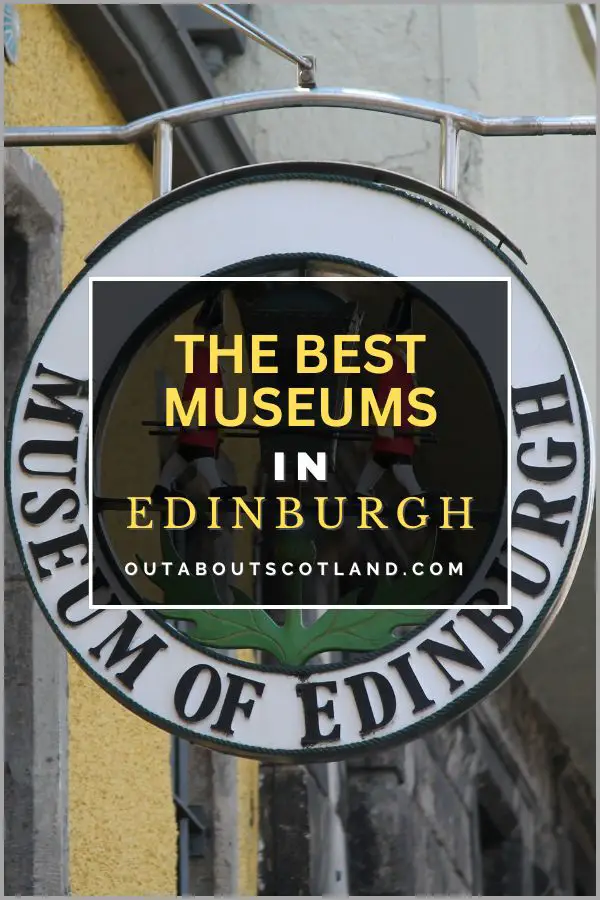John Knox House dates back to 1470 and can be found on Edinburgh’s Royal Mile in the Old Town. Although it’s named after the Presbyterian preacher John Knox, it was also the home of James Mossman, a goldsmith who was loyal to Mary Queen of Scots.
The building is now a public museum that depicts the story of the Scottish Enlightenment and the battles between Knox, and Queen Mary through a series of information displays and exhibitions.
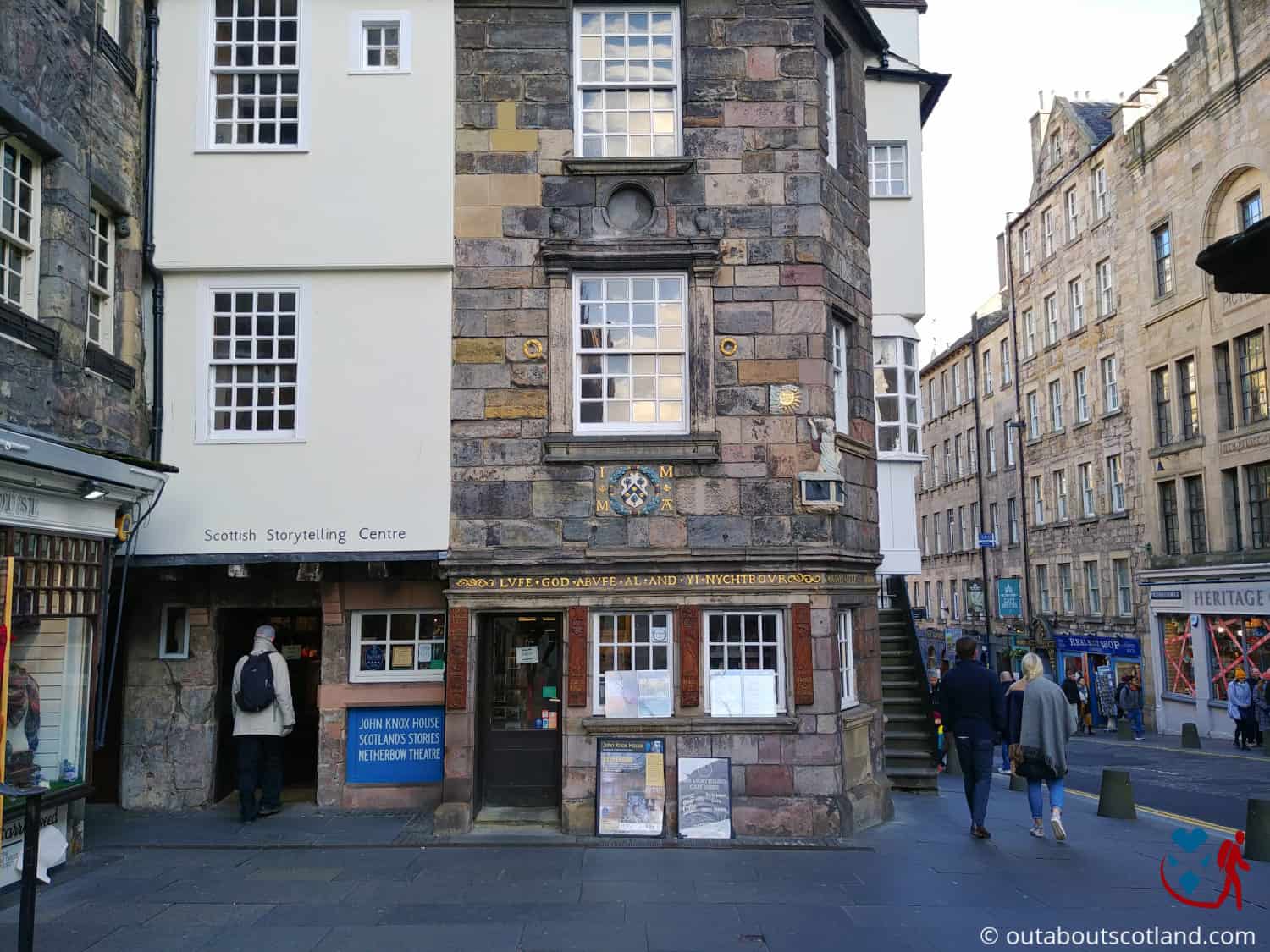
| Address: | High Street, Edinburgh, EH1 1SR |
| Opening Hours: | Monday-Sunday: 10 am-6 pm Last admission 5 pm |
| Admission Price: | Adults: £6 (£5 Conc) Children over 7: £1 Children under 7: Free |
| Parking: | None |
| Contact: | 0131 556 9579 |
| Facilities: | Shop, toilets, cafe |
| Photos: | Virtual Tour YouTube Video |
| BUY TICKETS | Click here to purchase |
Overview
One of the periods in Auld Reekie’s history (Auld Reekie is the historic nickname for Edinburgh) that’s particularly interesting is the 16th-century Reformation. During this time, the Church split into two factions – Catholic and Protestant – which eventually ushered in the Age of Enlightenment in Scotland.
Many influential people took part in this religious upheaval, but one of the leading figures was John Knox, a firebrand preacher who is perhaps best known for his battles against Mary Queen of Scots.
Several tourist attractions in Edinburgh mention John Knox, but none explains his story quite as well as the John Knox House in the middle of The Royal Mile. This historic building is the former home of the Protestant reformer, and it’s also the location of a museum devoted to the man and the events that forged Scotland into the country it is today.
Although John Knox only lived in the house for a short time, his legendary status meant the mediaeval building ended up being known as ‘Knox’s House’. The house was built in the 1470s, and both it and the adjoining Moubray House are the only surviving mediaeval buildings on The Royal Mile.
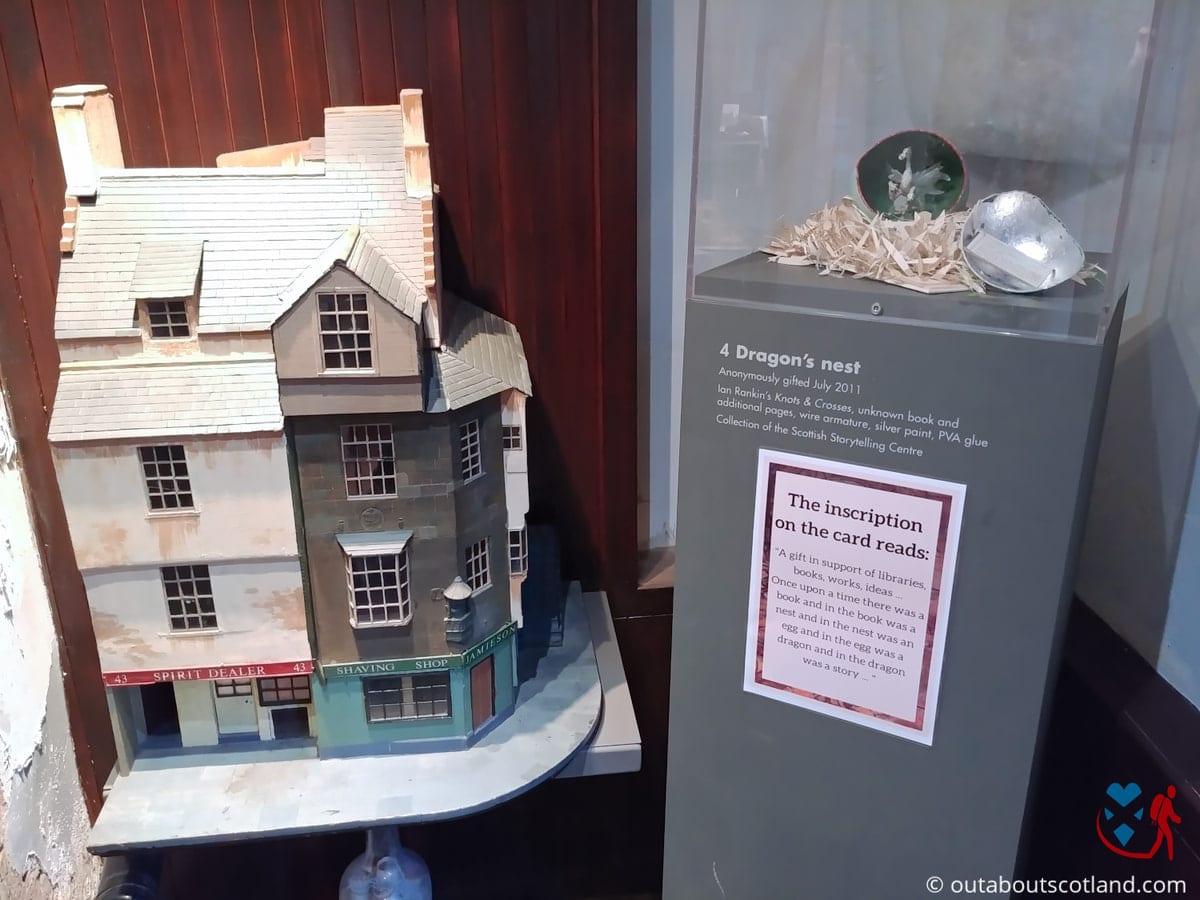
Today, John Knox House is known for its museum exhibits which include time capsules from the 1840s, restored artworks from the 15th century, and fascinating displays that explain the political events of Scotland during the time Knox was alive.
Given that James Mossman, a wealthy Catholic, also owned the house, it is questionable whether the Protestant Knox spent much time there. But even so, the building would have been well known to the preacher due to the fact that it’s located close to St. Giles Cathedral where he spent his later years giving sermons.
While John Knox’s House is a great place to learn about Edinburgh and the Reformation, his main home is actually located further up the Royal Mile in Warriston Close, which is today owned by the New Free Church. Visitors to Edinburgh can also discover the story of Knox at St. Giles Cathedral and Edinburgh Castle, as well as the National Museum of Scotland.
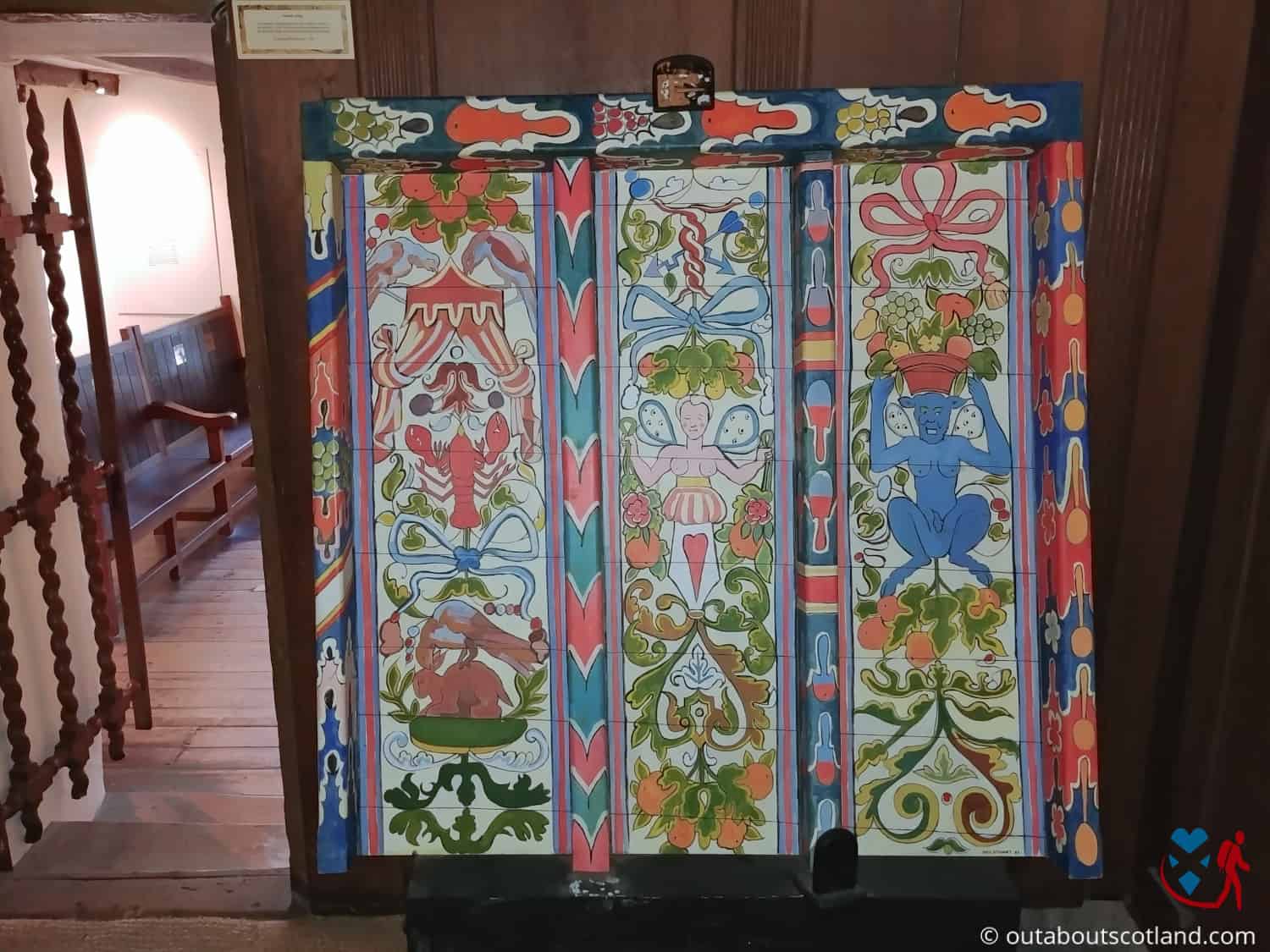
Book Tours in Scotland
The Highlights
1: The house dates back to 1470, making it one of the oldest buildings in Edinburgh. It provides visitors with a sense of what life was like during one of the most turbulent times in Scottish history.
2: Visitors can learn about the political and religious changes that took place during Knox’s lifetime and the impact they had on Scotland’s history. Interactive displays and audio-visual presentations provide an engaging experience for visitors of all ages, and the museum often hosts educational programmes and events.
3: The house is a fine example of a mediaeval Scottish townhouse. It features a variety of architectural details that are characteristic of the period, including oak-beamed ceilings, painted wooden ceilings, and original fireplaces.
Visiting Tips
1: You can get reasonably priced food at the Scottish Storytelling Centre café located next door to the John Knox House. The cafe is worth a visit as it’s usually much quieter than most of the cafes on the busy Royal Mile, and the prices are quite reasonable.
2: It won’t take more than an hour to view this attraction, so plan other activities if you’re visiting the city centre, such as Mary King’s Close located a short distance up The Royal Mile.
3: If you’d like a discounted ticket, take a look at the Groupon website as they often have special offers if you book through them in advance.
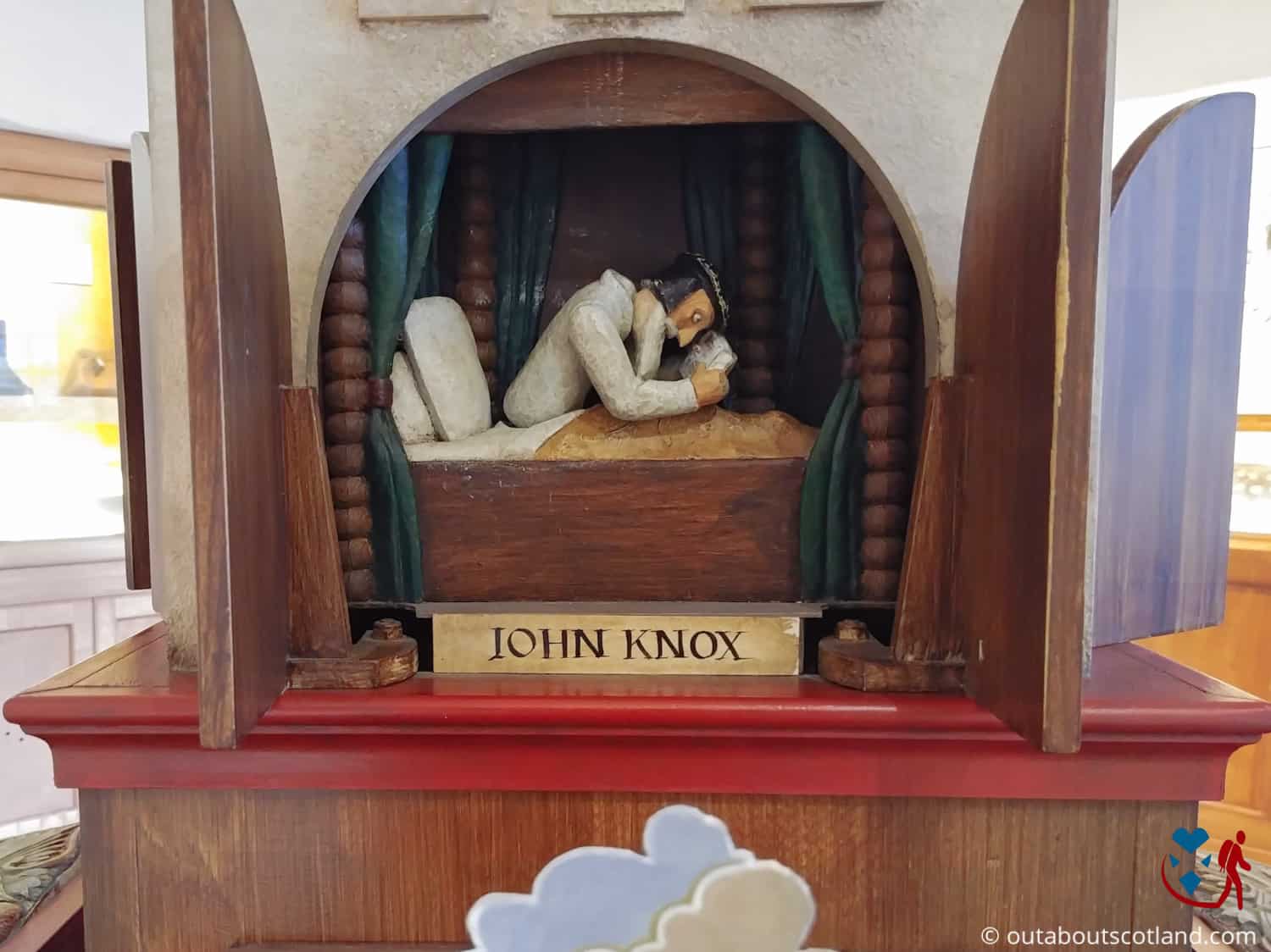
Protect Your Family From Scotland's Biting Midges
- Powerful, reliable protection for up to 8 hours
- Water- and sweat resistant
- Repels midges, mosquitoes, horse flies, sand flies, fleas and ticks
- Safe for use on adults, children over 30 months and pregnant women
- Non-sticky, moisturising with a pleasant fragrance
- Packaging may vary
Tourist Information
Although the main event is exploring the house, you’ll only really get a feel for Edinburgh during the 14th and 15th centuries by exploring the Royal Mile (so-called because it’s one mile from Holyrood Palace at the bottom to Edinburgh Castle at the top). Most of the buildings in this part of the city are hundreds of years old, and there’s no better way to experience the Old Town than to get lost in its maze of alleys.
Back at the house, you can see that it has many features that were popular amongst the wealthy residents of Edinburgh in the 15th and 16th centuries, with a beautiful wooden gallery and ornate hand-painted ceilings which are now faded, but there are colourful recreations dotted about the museum.
From the entrance, visitors pass through a souvenir shop into a small area that explains the backstory of John Knox and James Mossman before heading up a winding staircase to two restored rooms that contain a collection of manuscripts, artefacts, and artworks from the time they were alive. There are also information panels that explain the history and stories behind each object.

There’s a large collection of paintings in the house, but it’s unlikely that a religious man like Knox would have commissioned them. Instead, the goldsmith James Mossman, who owned the building in 1556 and was a devoted supporter of Mary Queen of Scots, is more likely to have installed them.
You’ll find as much information about Mossman during your tour as you will about John Knox, possibly because he lived an equally interesting life. Although he was a successful and very wealthy man, he got caught up in the religious turmoil of the Reformation and eventually lost his job as master of the Royal Mint before losing all his possessions and being charged with treason in 1571, and then executed in 1573.
After Mossman died, the house passed to James VI of Scotland, followed by a series of wealthy tenants, until it gradually fell into ruin. Thankfully, Knox’s association with the building led to the Church of Scotland taking ownership, and a programme of restoration in the mid-19th century saw it begin a new life as a museum in 1853.
John Knox House is quite small so you’ll struggle to make your visit last much longer than one hour, but on the other hand, the admission price is reasonable for a city centre attraction, so even though your visit will be short, it’s still good value for money.

Things to Do
Historical Tours: Embark on a self-guided tour of John Knox House, a historic building dating back to the 15th century. Learn about the life and work of John Knox, a leader of the Protestant Reformation, and explore the fascinating architectural features of the house.
Audio Guide: Experience Scotland’s turbulent history through audio guides that you can download to your mobile device. Hear the dramatic events of the 16th century come alive and gain a deeper understanding of the religious conflicts that shaped the nation.
Storytelling Performances: Enjoy captivating storytelling sessions at the Scottish Storytelling Centre. These performances, which frequently feature costumed actors in the lead roles, provide an interesting and entertaining way to learn about Scotland’s past.
Cafe: Have your lunch at the Scottish Storytelling Centre’s cafe. The cafe provides a variety of light bites in a setting that the crowds that fill the Royal Mile during the busiest tourist season frequently overlook.
Bookshop Browsing: Don’t miss the museum’s well-stocked bookshop which offers a range of interesting reads about Scotland’s history. Whether you’re looking for in-depth academic texts or lighter historical novels, you’re sure to find something to remember your visit by.
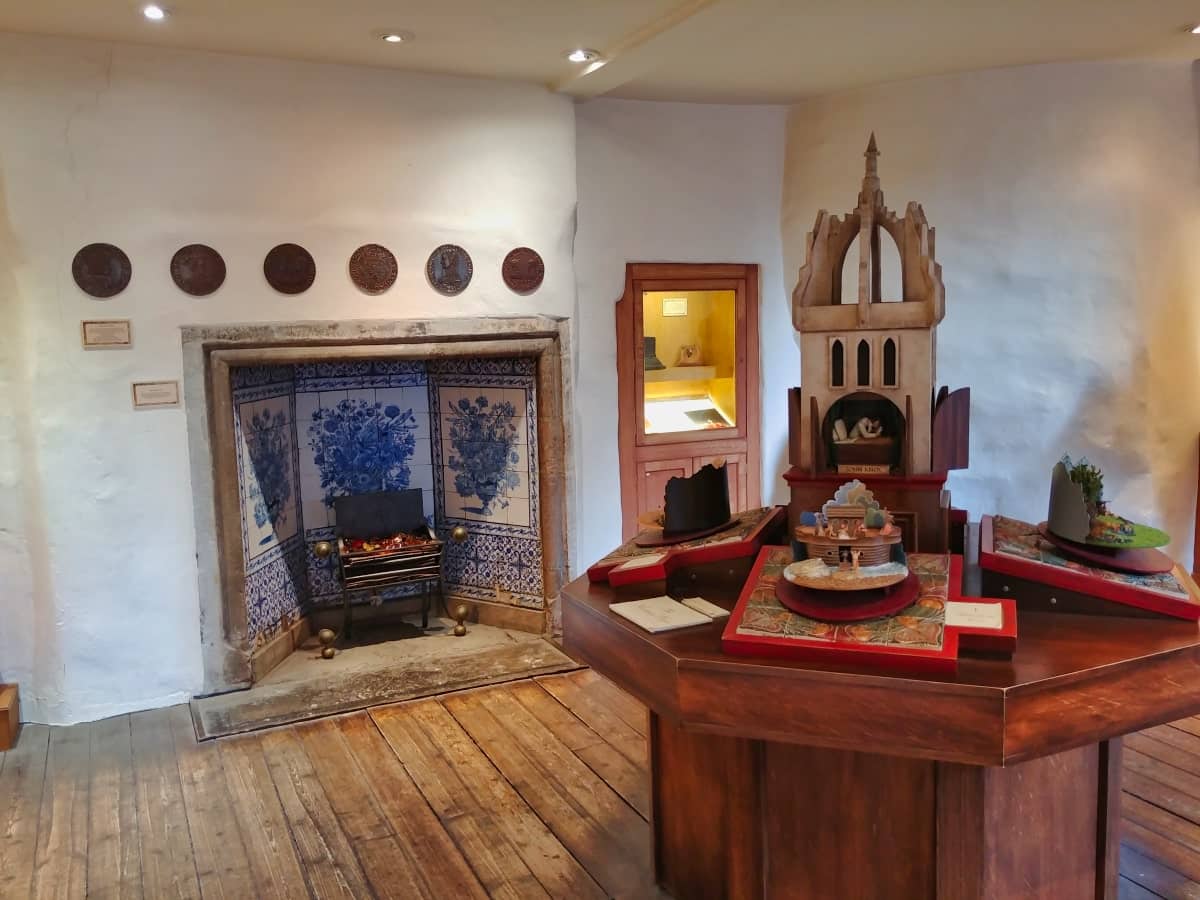
Book Tours in Scotland
Things to Do Nearby
The Royal Mile. 197 High St, Edinburgh EH1 1PT.
A famous medieval high street that joins Holyrood Palace to Edinburgh Castle. Known for its closes and wynds that join the road along its length. It features a variety of shops, bars and restaurants.
St. Giles Cathedral. High St, Edinburgh EH1 1RE. 6-minute walk.
A grand Gothic-style medieval cathedral also known as ‘The High Kirk’, it was the place of worship where John Knox preached. Free to visit and guided tours are available. Shop and café on site.
The Museum of Childhood. 42 High St, Edinburgh EH1 1TG. 1-minute walk.
A free-to-visit museum which celebrates childhood through displays of toys from recent memory to the 1800s. Set in an 18th-century building on The Royal Mile with five galleries inside.
Edinburgh Vaults. South Bridge, Edinburgh EH1 1QR. 4-minute walk.
Underground chambers with a ghostly history. Guided tours take visitors through the subterranean rooms while explaining the story of Edinburgh.
The Museum of Edinburgh. 142-146 Canongate, Edinburgh EH8 8DD. 4-minute walk.
A museum that serves to inform and educate visitors about the history of Edinburgh, from its industrial heritage to the people who made the city into what it is today. Free entry.
Frequently Asked Questions
Did John Knox live in John Knox House?
John Knox, a leading figure in the Scottish Reformation, is believed to have lived in John Knox House in Edinburgh. However, it’s worth noting that there’s some controversy around this claim as some historians argue that he may have lived in a different house in Edinburgh.
What was John Knox known for?
John Knox was one of the leading figures of the Scottish Reformation when Scotland broke away from the Papacy and developed its Presbyterian religion. Knox was also well known for his bitter opposition to Mary Queen of Scots.
Where is John Knox’s grave?
John Knox is buried under the car park next to St. Giles Cathedral on The Royal Mile in Edinburgh. The grave site is marked with a brass cobblestone.
What did John Knox say to Mary Queen of Scots?
John Knox, a leader of the Protestant Reformation in Scotland, had several contentious meetings with Mary, Queen of Scots, who was a Catholic. Knox was opposed to the idea of female rule and was particularly critical of Mary’s Catholic faith and her personal life.
During their first meeting in 1561, Knox famously defended his religious beliefs and criticized Mary’s Catholicism. He said, ‘I am in the place where I am demanded of conscience to speak the truth, and therefore the truth I speak, impugn it whoso list’. This roughly translates to, “I am in a place where my conscience demands that I speak the truth, and so I will speak the truth, let whoever wants to challenge it.”
Protect Your Family From Scotland's Biting Midges
- Powerful, reliable protection for up to 8 hours
- Water- and sweat resistant
- Repels midges, mosquitoes, horse flies, sand flies, fleas and ticks
- Safe for use on adults, children over 30 months and pregnant women
- Non-sticky, moisturising with a pleasant fragrance
- Packaging may vary







